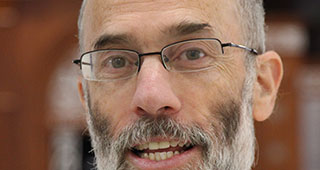Beit Midrash
- Sections
- Chemdat Yamim
- P'ninat Mishpat
It is clear that the wedding ceremony run by the priest did not create kiddushin, even if there would have been kosher witnesses. This is because the priest’s ceremony does not include giving an object of value from the groom to the bride, but just the priest’s declaration that they are married. However, one has to consider whether the fact that they lived together, so that everyone knows that they had marital relations, can serve as kiddushin (based on Gittin 81a). In (see ibid.) certain cases, we say that the witnesses to a couple’s yichud (being together in a secluded place) are equivalent to witnesses of marital relations, which is a means of kiddushin (Kiddushin 2a).
However there are three reasons why we cannot assume kiddushin despite the fact that they had relations (she is pregnant) and people knew about it. One reason is that the fact that their used a priest to marry is a sign that they were not interested in having a halachic marriage, Under such circumstances, we do not employ the assumption that a couple does not want to live in sin, i.e., without valid kiddushin, if they can avoid it. Secondly, the woman was required to go to the mikveh prior to the wedding and after the inquisition decree she did not have a place to go. Thus, since either way they would be living in sin, there are insufficient grounds to say that they had intention for kiddushin to avoid sin. Finally, we cannot consider people who generally knew the couple was living together as witnesses of yichud. Only the Ra’ah considers this testimony, whereas according to everyone else, there need to be witnesses for a specific known yichud.
[This responsum of the Rivash is one of the most basic sources regarding the question of whether in modern times, a Jewish couple who are civilly married require a get after the dissolution of their union. Piskei Din Rabbaniim vol. XIII, pp.106-143 is one of many sources which discuss the Rivash’s opinion. While the logic of whether or not the couple is interested in a Jewish marriage may change from case to case, the most objective leniency for not requiring a get is the idea that the witnesses of yichud must be witnesses to yichud at a specific time and place. The dayanim point out that the Rama, Even Haezer 149:1 rules like the Ra’ah (with whom the Rivash argues) that even general knowledge by a part of the populace that the couple are generally living together as husband and wife suffices.]

P'ninat Mishpat (802)
Beit Din Eretz Hemda - Gazit
252 - P'ninat Mishpat: Multiple Agreements and Parties – part II
253 - P'ninat Mishpat: Late and Flawed Apartment
254 - P'ninat Mishpat: Did Any Furniture Go to the Buyer? – part II
Load More

P'ninat Mishpat: Problematic Lights?
based on appeal of ruling 84085 of the Eretz Hemdah-Gazit Rabbinical Courts
Beit Din Eretz Hemda - Gazit | Cheshvan 5786

P'ninat Mishpat: Dividing Returns on Partially Cancelled Trip – part I
based on ruling 84070 of the Eretz Hemdah-Gazit Rabbinical Courts
Beit Din Eretz Hemda - Gazit | Tammuz 5785

P'ninat Mishpat: Return of Down Payment Due to War – part I
based on ruling 84044 of the Eretz Hemdah-Gazit Rabbinical Courts
Beit Din Eretz Hemda - Gazit | Elul 5785

P'ninat Mishpat: Normalizing an Agreement that Becomes Absurd
based on ruling 83069 of the Eretz Hemdah-Gazit Rabbinical Courts
Beit Din Eretz Hemda - Gazit | Sivan 5785

Various Rabbis
Various Rabbis including those of of Yeshivat Bet El, such as Rabbi Chaim Katz, Rabbi Binyamin Bamberger and Rabbi Yitzchak Greenblat and others.

Moreshet Shaul: A Crown and its Scepter – part II
Based on Siach Shaul, Pirkei Machshava V’Hadracha p. 294-5
Av 5785

Good and Evil Depend on the Actions
5777 Tammuz 22

Following the Majority When the Minority Is More Knowledgeable
5771























